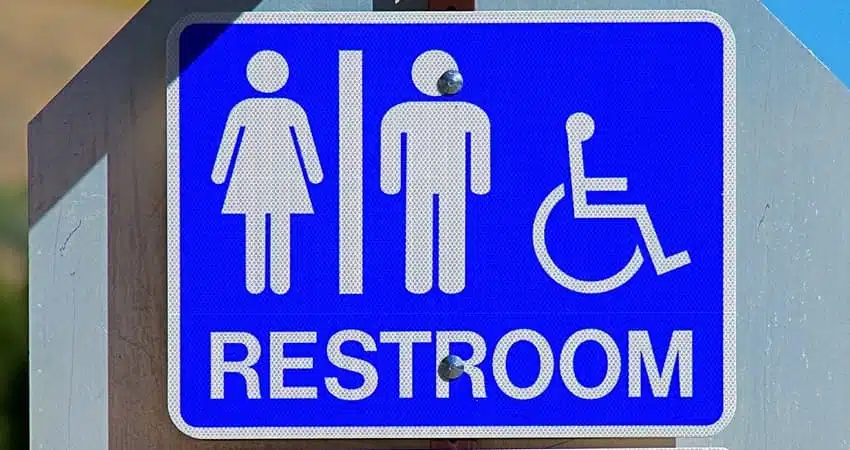Do you constantly feel the urge to rush to the closest bathroom after meals or whenever enjoying social gatherings with friends? Do certain foods or drinks seem to irritate your bladder and provoke urgency or frequent urination episodes? If so, you may be consuming common bladder irritants without realizing the impacts on pelvic health and comfort. Learning your unique food sensitivity profile then adjusting intake appropriately relieves frustration while supporting whole body balance. This dietary guide explores how bladder irritants manifest issues, which foods and fluids typically trigger symptoms, pragmatic lifestyle changes providing relief and when seeking professional support becomes worthwhile.
What are Bladder Irritants?
Your bladder functions as a balloon-like reservoir collecting urine filtered by the kidneys until ready for release. Bladder irritants refer to substances that provoke inflammation when residue passes through your urinary tract.
Drinks like coffee or alcohol and foods like citrus, tomatoes, or spicy dishes often irritate sensitive bladders. Some experience issues after eating certain healthy foods too.
Reactions vary individually based on your unique bladder lining. Identifying and avoiding personal triggers provides the most relief.
Signs your Diet Contains Bladder Irritants
Be alert for possible symptoms signaling bladder irritation including:
- Sudden, frequent urges to urinate
- Leaking urine involuntarily
- Burning or stinging sensations
- Cramping or pain in the pelvis or lower back
- Cloudy, strong-smelling, or reddish urine
Severe symptoms above accompanied by fever require prompt medical attention to check for infection. But in general, dietary adjustments better manage chronic or moderate bladder discomfort.
Now let’s explore tactics for uncovering which foods and drinks provoke your unique bladder woes.
Create a Food Diary to Pinpoint Bladder Irritants
Because individual triggers vary wildly, a food diary helps identify your personal bladder irritants.
Follow these steps:
- Record all foods/drinks plus amounts for 3 days – 2 weekdays and 1 weekend day since habits differ.
- Note all symptoms and timing in relation to meals/beverages.
- Look for symptom patterns tied to certain items.
- Experiment eliminating suspect items for several days and observe changes.
- Discuss findings with your doctor or dietitian for input.
Be detailed since subtle ingredients like spices often get overlooked though potentially problematic. Over time, correlations between intake and discomfort will emerge pointing you toward prime targets.
Top Foods and Drinks Known to Irritate Bladders
While your diary provides customized enlightenment, these suspects commonly provoke bladder issues for many:
- Caffeinated Beverages – Coffee, tea, soda, and energy drinks containing caffeine frequently inflame bladder linings when excreted. Limiting consumption reduces irritation.
- Alcoholic Beverages – All types of alcohol – beer, wine, spirits – can ignite urgency and frequency symptoms. Again, moderating intake helps tame symptoms.
- Carbonated Beverages – Fizzy sodas often irritate bladders, though sparkling water without sweeteners may be tolerable. The bubbles and acids likely contribute to problems.
- Citrus Fruits and Juices – Oranges, lemons, limes, grapefruit, and juices made from these contain acids that can inflame sensitive bladders when passing through. Limiting servings may help.
- Tomato-Based Foods – Fresh tomatoes, sauces, salsas, ketchup and tomato-heavy dishes also pack acids that frequently agitate bladders. Cooking tomatoes reduces acids.
- Artificial Sweeteners – Ingredients like aspartame, saccharine, and sucralose commonly used in diet or “sugar-free” products impact bladder health for some.
- Spicy Foods – Dishes seasoned with fiery ingredients like chili peppers, curry, or black pepper may burn bladder linings during elimination.
Healthy Substitutions to Soothe your Bladder
Switching to bladder-friendlier alternatives for common bladder irritants provides relief while still enjoying flavorful nutrition. Try these modifications:
- Instead of Coffee – Substitute with herbal teas, decaf coffee, or low-acid mushroom coffee blends.
- Instead of Orange Juice – Swap citrus juices for melons, grapes, berries, or pear nectar.
- Instead of Tomato Sauce – Use creamy nut or seed-based sauces for pasta. Roast tomatoes to reduce acids.
- Instead of Diet Soda – Satisfy sweet cravings with plain seltzer or small amounts of diluted fruit juice spritzers.
- Instead of Alcohol – Quench thirst with coconut water, herbal iced tea, or non-acidic fruit infusions.
- Instead of Spicy Dishes – Satisfy heat cravings using milder peppers like ancho, paprika, or chermoula seasoning blends.
With attention and creativity, you can craft a regimen minimizing exposure to personalized bladder irritants yet still enjoy nutritious and tasty cuisine.
Lifestyle Approaches to Soothe Chronic Bladder Discomfort
Diet adjustments provide immense relief by eliminating bladder irritants. Complementary techniques further calm symptoms:
- Stay Well Hydrated – Drinking adequate water dilutes urine so any irritants have reduced impact. Aim for light yellow urine. Too much water can also irritate bladders for some.
- Manage Stress – Anxiety and tension exacerbate bladder symptoms. Incorporate relaxing activities like yoga, meditation, or breathwork regularly to calm the nervous system.
- Consider Supplements – Herbal supplements like quercetin may coat and soothe bladder walls. Consult your physician before starting any regimen.
- Explore Pelvic Floor Therapy – Pelvic floor muscle issues often contribute to urgency and frequency. A trained therapist can provide therapeutic release and exercises.
- Use Heating Pads – Applying gentle warmth from heating pads to the pelvis, lower back, or bladder region directly can relieve muscular tension contributing to discomfort.
- Empty Bladder Fully – Always urinating completely when the need arises (rather than holding it) ensures irritants don’t linger in urine trapped in the bladder.
- Modify Fluid Intake Timing – Reducing fluid consumption close to bedtime minimizes overnight trips to the bathroom and improves sleep.
Lifestyle measures support the benefits achieved by removing bladder irritants from your diet. Be patient finding the right combination tailored to your needs through ongoing tracking.
Signs It’s Time to See a Doctor About Bladder Issues
While most bladder irritant symptoms can be self-managed with diet changes and lifestyle measures, consult a physician promptly if you experience:
- Fever or nausea
- Inability to urinate
- Back or abdominal pain
- Blood in urine
- Lack of improvement modifying diet
- Worsening intensity or frequency
These red flags could indicate complex conditions requiring medical diagnosis beyond dietary causes like a UTI, bladder infection, or interstitial cystitis. Don’t hesitate reaching out for guidance.
Putting It All Together - A Path to Bladder Irritant Relief
Regaining bladder comfort by pinpointing pesky dietary triggers then eliminating them takes patience but delivers immense benefits. Follow these steps to embark on your relief journey:
- Step 1: Record all intake and symptoms rigorously for 3 days minimum. Look critically to identify likely irritating foods/drinks.
- Step 2: Experiment removing prime suspect items from your diet for several weeks and note changes in your bladder symptoms.
- Step 3: Discuss insights with your doctor or dietitian and get their input on substitutions or supplemental protocols.
- Step 4: Reintroduce eliminated items one at a time while tracking reactions to confirm specific triggers.
- Step 5: Make sustainable diet and lifestyle modifications catering to your unique bladder sensitivities for lasting relief.
Be kind with yourself throughout this investigative process. Healing your relationship with food and your body simultaneously requires compassion. But with consistency uncovering and avoiding your personal bladder irritants, you’ll soon be making strides toward comfortable urinary wellness.
The Takeaway on Easing Bladder Discomfort Through Diet
Identifying hidden bladder irritants in your everyday diet empowers you to make simple swaps that add up to symptom relief and improved quality of life. No more constantly scanning bathrooms everywhere you go or curtailing activities.
Now you’re equipped with a strategic bladder-friendly eating and lifestyle plan tailored to pacify your personal triggers. Listen to signals from your body and fine-tune approaches as needed. With time, most discover manageable ways to savor food again without suffering.
Here’s to navigating food and drink in a bladder conscious way so you can confidently reclaim comfort. No more urgency, leakage, stinging, or frequency getting in the way of feeling your best every day. Cheers to freedom from discomfort!



